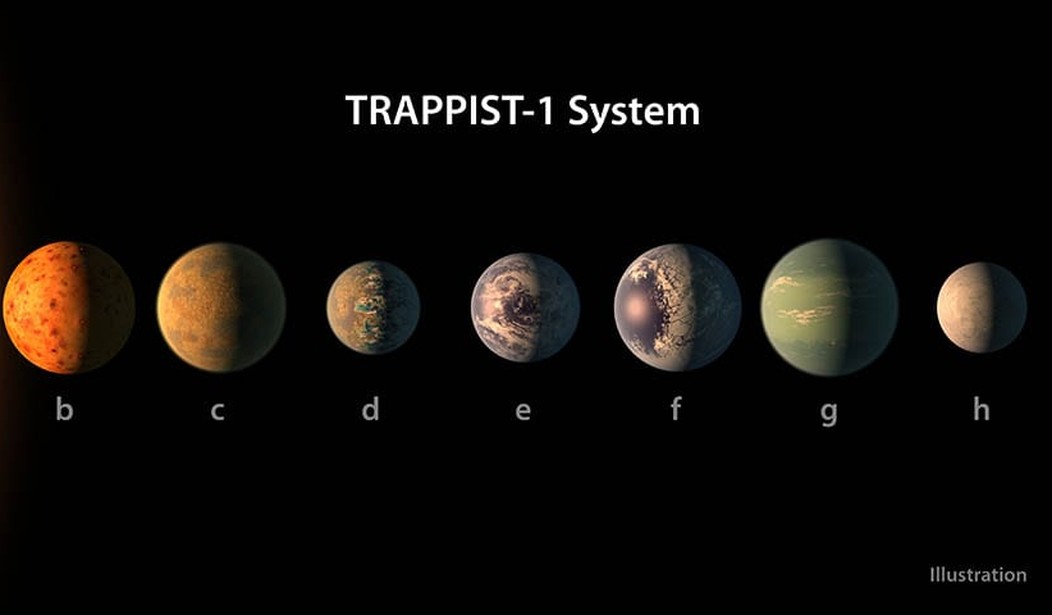Welcome to Happy, fourth planet in the TRAPPIST-1 system! First habitable planet discovered by NASA back on Earth, we’re only about 40 light-years away, an easy trip of about a month by Alcubierre Warp (and please visit our sponsor, Empress Interstellar Cruises, for discount fares, one-way or round trip. Colonists, explore our special rates for proven-fertile females and breeding pairs.)
The TRAPPIST-1 system is a popular tourist destination, with no fewer than three planets in the “Goldilocks” zone, all with active human colonies. Happy is the most nearly Earthlike, with similar average temperature and surface gravity of only 1.05 gees, far more comfortable than any of the super-earths.
And the views are spectacular! Up in the sky, six moons, beautiful in the light of their central star — known among the residents as Snow White — except the moons are actually Happy’s brother planets. Dopey and Sleepy are the other easily habitable planets, not much farther from Happy than from the Earth to its Moon at closest approach, the rapidly growing cities and mining colonies clearly visible.
Visit exotic TRAPPIST-1 for an experience you’ll find nowhere else in the explored section of the galaxy!

NASA Announces Discovery of Seven New Extrasolar Planets
So, that was a touch speculative, I’ll admit. But here’s the real story: NASA Telescope Reveals Largest Batch of Earth-Size, Habitable-Zone Planets Around Single Star. After teasing it for days, NASA announced that the Spitzer Space Telescope had discovered no fewer than seven planets, roughly Earth-sized, orbiting an ultra-cool red dwarf star. The original discovery was with a ground-based telescope in Chile called the Transiting Planets and Planetesimals Small Telescope and abbreviated TRAPPIST. The star, in the constellation Aquarius, is so small it didn’t have an official catalog number, so is now being called after the TRAPPIST instrument.
It is a kind of an odd system. The star, with a surface about 2550 kelvins (call it 2300°C), is about the color of the hottest embers in a wood fire. It’s really a tiny star, barely a star at all, and the orbits of the planets are appropriately tiny too — the innermost planet (which I’m now named “Bashful,” because after all this is a dwarf star) orbits TRAPPIST-1 in a day and a half. Happy and Sleepy have “years” of about 6 and 9 days. And their star may seem slow and sleepy, but it’s a fitful sleep, as ultra-cool dwarves are given to bursts of radiation that will make for spectacular aurorae — if they don’t blow the atmosphere off completely.
Still, this is the first time a solar system with so many planets — and so many that could really plausibly be called “Earthlike” — has been found. We don’t know yet if any of them really have liquid water or an oxygen atmosphere, but you can bet astronomers all over the world are trying to think of experiments to tell them more.










Join the conversation as a VIP Member